What if I told you that the devil doesn’t come in red horns, but in a sleek aluminum can? That something sitting in almost every convenience store and gas station is quietly wrecking our bodies, addicting our youth, and stealing years off our lives? Energy drinks—marketed as a solution for tiredness and marketed toward young, impressionable minds—are nothing short of a ticking time bomb.
In today’s fast-paced world, energy drinks have become a staple, especially among teenagers and young adults looking for a quick boost. But at what cost? Behind the flashy branding, extreme sports sponsorships, and promises of heightened focus and performance lies a dangerous cocktail of chemicals designed to hijack the body’s natural energy systems. Overloaded with caffeine, sugar, and synthetic stimulants, these beverages are leading to an alarming increase in heart problems, metabolic disorders, and mental health issues—especially among young people.
Despite increasing research pointing to the dangers, energy drink sales continue to skyrocket. In 2022 alone, the global energy drink market was valued at $86.35 billion, and it’s expected to grow even more in the coming years. Why? Because these drinks aren’t just about caffeine—they’re about addiction. Big corporations and even government entities turn a blind eye to the growing crisis, prioritizing profit over public health.
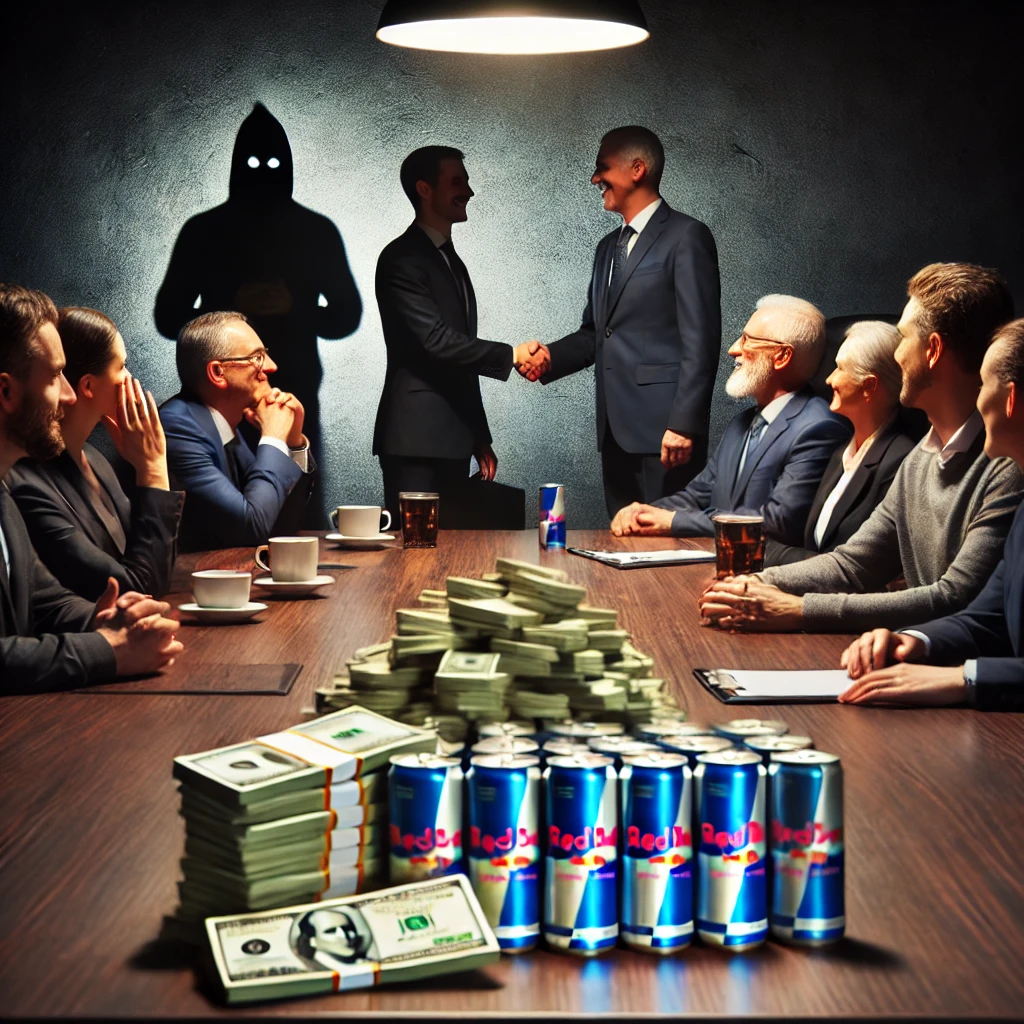
It’s time to wake up. Energy drinks aren’t just bad for you—they are a calculated attack on health, designed to create dependency while raking in billions for the companies that produce them. This article will break down the science, expose the hidden dangers, and show how energy drinks are contributing to the destruction of our youth and the generations to come.
The Rise of Energy Drinks – A Modern-Day Plague
In the early 2000s, a new monster was unleashed onto the global market—energy drinks. Once a niche product, these high-caffeine, high-sugar beverages exploded into popularity, fueled by aggressive marketing campaigns and a culture that glorifies productivity, late-night grinding, and extreme lifestyles. Today, they are a multi-billion-dollar industry, with brands like Red Bull, Monster, Bang, and Rockstar leading the charge. But how did we get here?
The first modern energy drink, Red Bull, hit the U.S. market in 1997, drawing inspiration from a Thai beverage called Krating Daeng. Within just a few years, Red Bull had carved out an empire, becoming synonymous with high energy, extreme sports, and youth culture. Seeing the potential, other corporations jumped on board, flooding the market with competing products, each with more caffeine, more sugar, and more “performance-enhancing” ingredients.
How Energy Drinks Became a Billion-Dollar Industry
- Aggressive Marketing to Teens and Young Adults
- These drinks weren’t advertised like coffee or soda—they were sold as a lifestyle. Extreme sports, gaming culture, music festivals—energy drinks inserted themselves into spaces where young people spent their time.
- Sponsorships of extreme sports like X-Games, UFC, and racing events created an association between energy drinks and peak physical performance.
- The Hook – Addiction Disguised as Energy
- Energy drinks deliver a high caffeine content (often 200mg+ per can) along with stimulants like taurine and guarana, leading to dependency and withdrawal symptoms similar to hard drugs.
- Studies show that energy drink consumption is rising fast, with teenagers being one of the most affected groups.
- Targeting Schools & Colleges
- Many college students and high schoolers turn to energy drinks for studying, unknowingly rewiring their brains for addiction at an early age.
- A study published in the Journal of Nutrition Education and Behavior found that over 30% of middle and high school students regularly consume energy drinks, despite known health risks.
- A Dangerous Precedent: The Rise of Emergency Room Visits
- According to the Centers for Disease Control and Prevention (CDC), emergency room visits linked to energy drink consumption doubled from 10,068 in 2007 to over 20,783 by 2011—and numbers continue to rise today.
- Young adults who mix energy drinks with alcohol are at an even greater risk of hospitalization due to increased heart rate, dehydration, and heightened intoxication.
The rise of energy drinks isn’t just a story of success—it’s a story of deception and health destruction. These companies aren’t just selling beverages; they’re creating generations of addicts, starting with children as young as 10 years old, ensuring that future generations remain hooked.
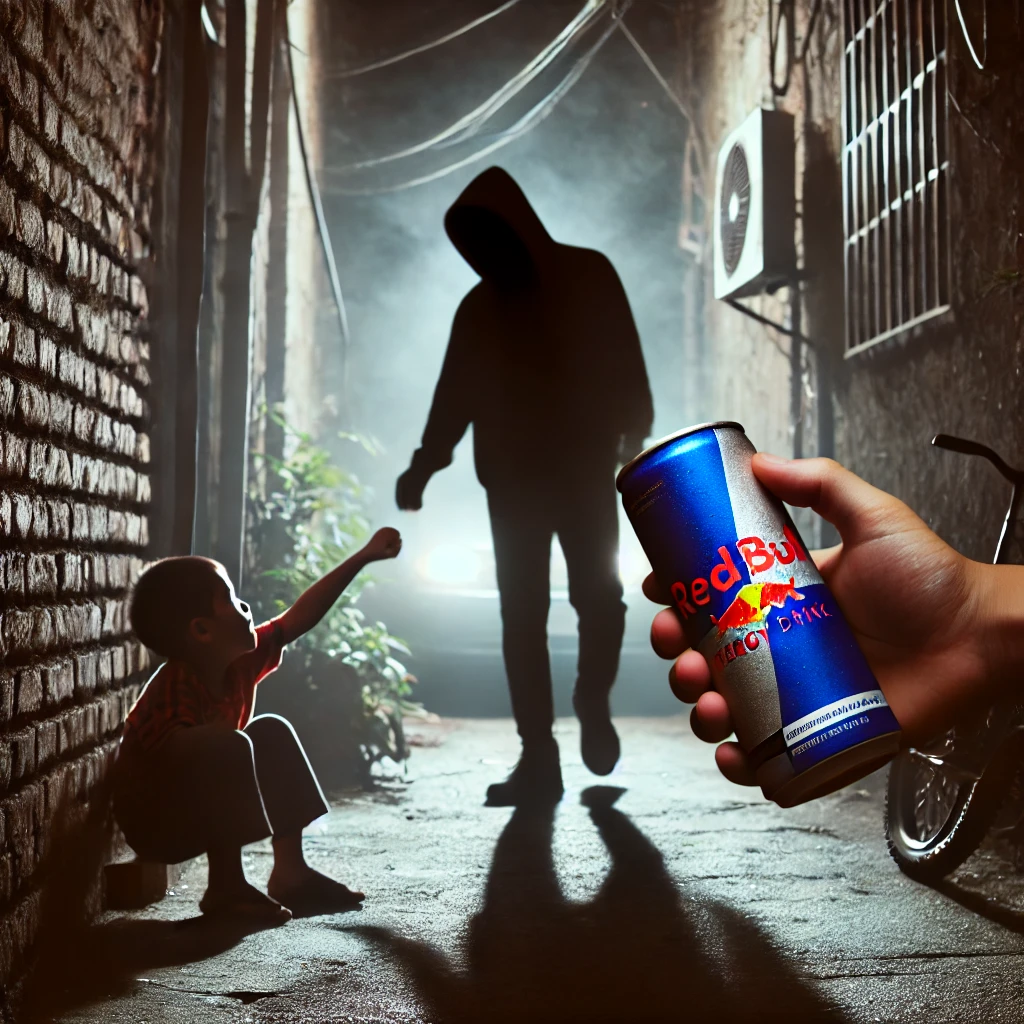
Scientific Sources & Real Data:
- American Academy of Pediatrics (AAP): Energy drinks should never be consumed by children due to their dangerous stimulant levels. (Source)
- CDC Report on Emergency Room Visits Due to Energy Drinks: (Source)
- National Institute on Drug Abuse (NIDA): Energy drinks contribute to substance abuse patterns in young adults. (Source)
Hooking the Youth – The Predatory Marketing Strategies
Energy drink companies don’t just sell beverages—they sell an identity. They don’t market their products as just another drink; instead, they associate them with power, rebellion, and elite performance. The biggest victims? The youth.
These corporations know exactly what they are doing. They don’t waste their advertising budgets on older generations who drink coffee or tea. Instead, they target teenagers, young adults, and even children to get them hooked early. Once addicted, they become lifelong customers, pumping billions into an industry that’s destroying their health.
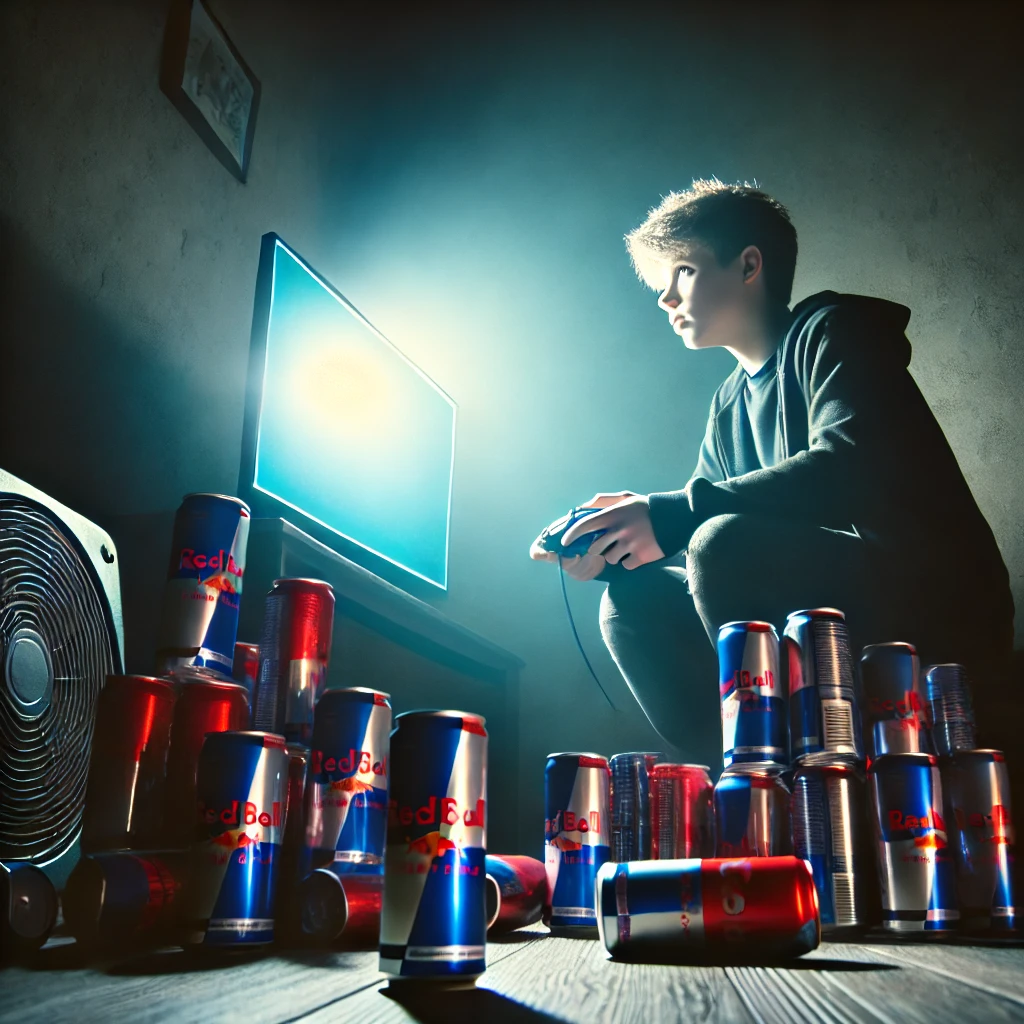
1. Sponsoring Extreme Sports, Gaming, and Music Culture
Energy drinks don’t just pop up in grocery stores—they are deeply embedded in youth culture.
- Extreme Sports: Red Bull and Monster sponsor extreme sports events like skateboarding, BMX, motocross, and UFC, creating an association between their product and elite athleticism. Kids see their favorite athletes chugging these drinks and assume they are “healthy” or necessary for performance.
- Gaming & Esports: Gamers are one of the biggest targets. With the rise of esports, companies like G Fuel, Bang, and Monster have partnered with major gaming tournaments, Twitch streamers, and YouTube influencers. They brand themselves as a necessity for focus and performance, luring young players into dependency and overstimulation.
- Music Festivals & Celebrity Endorsements: Energy drinks sponsor concerts and festivals, making sure their logos are plastered over events that attract young people.
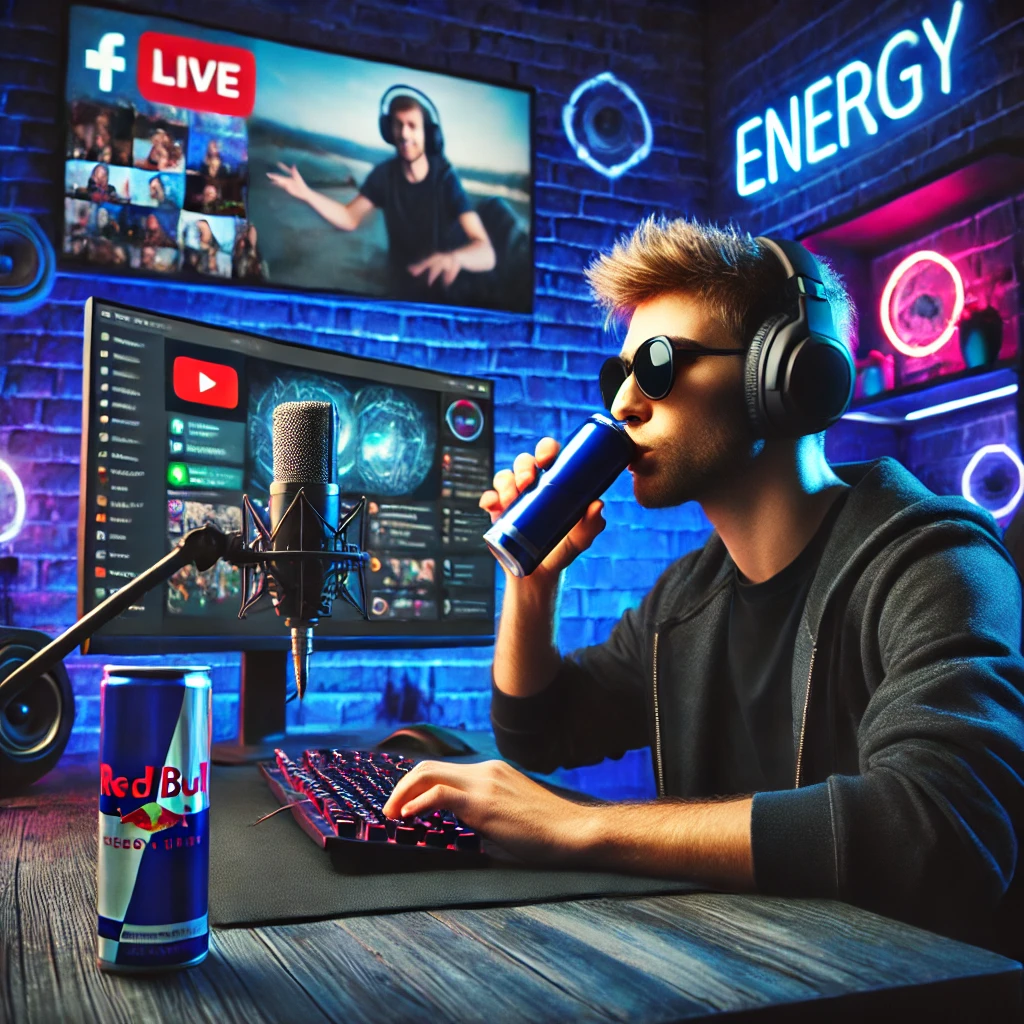
This is not an accident. The more these brands integrate into youth culture, the more energy drinks become a normalized and expected part of daily life.
2. The “Cool Factor” – How Energy Drinks Sell Rebellion
Unlike traditional soft drinks, energy drinks sell themselves as edgy, rebellious, and powerful. Their branding is designed to appeal to young minds looking for identity and excitement.
- Monster’s “Unleash the Beast” tagline isn’t just about caffeine—it’s a psychological message that drinking it makes you stronger, tougher, and part of an underground movement.
- Red Bull’s extreme stunts and space jumps create an image of high risk, high reward—something every teenager wants to feel a part of.
- Bang Energy’s influencer marketing campaigns make energy drinks seem like a necessity for high performance and success.
This kind of psychological manipulation works because young brains are still developing. The prefrontal cortex, responsible for decision-making and risk assessment, doesn’t fully mature until age 25. By targeting people under this age, companies trap consumers into addiction before they can fully grasp the consequences.
3. What Age Do Kids Start Drinking Energy Drinks?
The numbers are terrifying.
- According to a 2018 study published in the Journal of Nutrition, over 30% of middle and high school students consume energy drinks regularly.
- The average age of first-time consumption is between 10-12 years old.
- By the time they reach college, over 50% of students report consuming energy drinks at least once a week, with many using them daily.
- Boys are more likely to consume energy drinks than girls, largely due to marketing tactics that tie these drinks to masculinity and extreme endurance.
Once kids start, they don’t stop. The caffeine, sugar, and stimulants rewire their brain chemistry, making them dependent on energy drinks to function normally.
4. The Gateway Drug Effect – Energy Drinks and Substance Abuse
It gets worse. Studies have shown that energy drink consumption is linked to future substance abuse.
- A 2014 study from the National Institute on Drug Abuse (NIDA) found that young adults who regularly consume energy drinks are significantly more likely to develop alcohol and drug dependencies later in life.
- The combination of high caffeine and sugar levels triggers the brain’s reward system, much like nicotine and hard drugs.
- Teenagers who drink energy drinks frequently are twice as likely to engage in binge drinking, smoke cigarettes, or use illegal drugs.

Energy drinks are not just a beverage choice—they are an entry point into a dangerous cycle of addiction.
5. Schools and Parents Are Clueless
The most shocking part? No one is talking about this.
- Schools have banned sodas in vending machines but still allow energy drinks filled with even more sugar and caffeine.
- Many parents don’t realize that their child’s daily can of Monster has more caffeine than multiple cups of coffee.
- The FDA doesn’t regulate energy drinks the same way it does sodas or coffee, allowing companies to avoid accountability for health risks.
This means that children as young as 10 are consuming dangerously high levels of caffeine without any oversight.
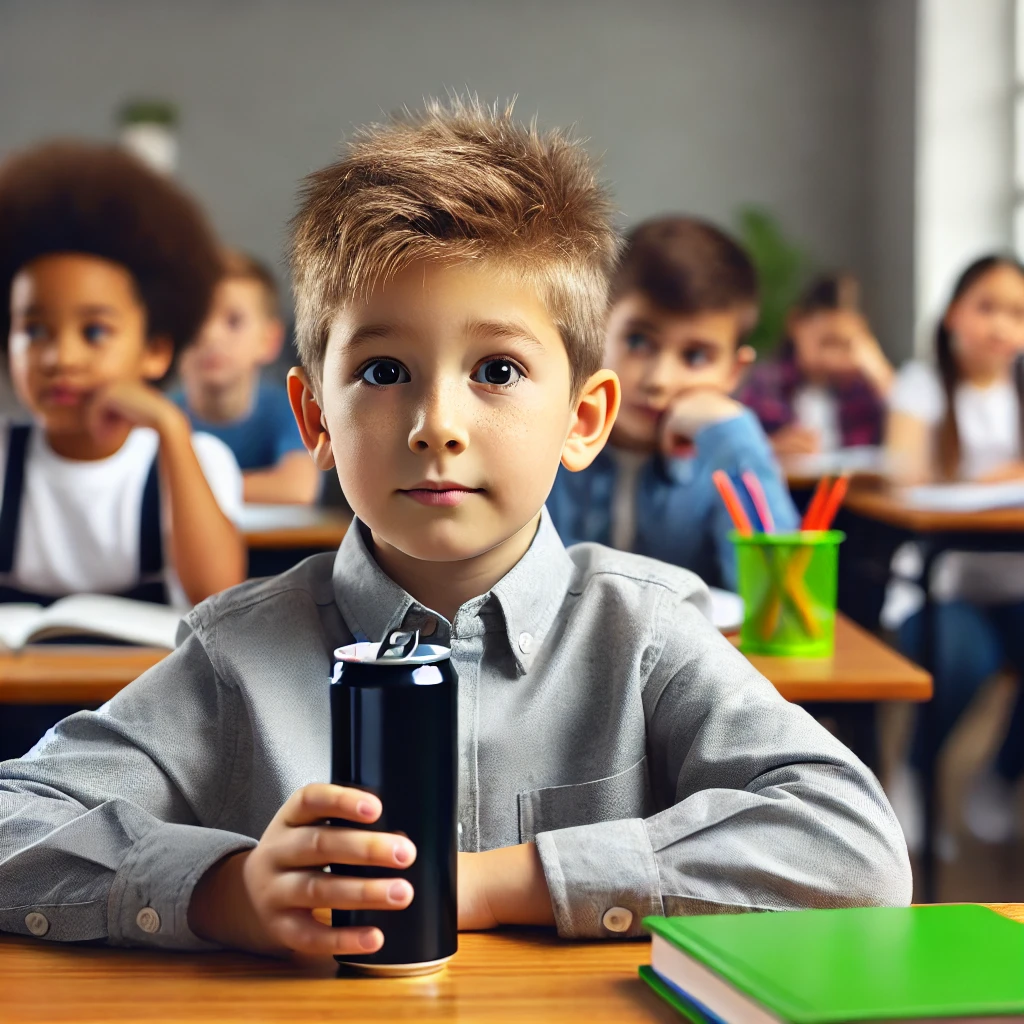
Scientific Sources & Real Data:
- Journal of Nutrition Study on Teen Energy Drink Consumption (Source)
- National Institute on Drug Abuse (NIDA): Energy Drinks and Addiction Risks (Source)
- American Academy of Pediatrics: Energy Drinks Are Unsafe for Kids (Source)
Energy drink companies aren’t just selling drinks—they’re manufacturing addicts. The next generation is being hooked on caffeine, sugar, and stimulants at an alarming rate, all in the name of corporate profit.
What’s Inside the Can? The Toxic Cocktail of Chemicals
You wouldn’t drink poison, right? But every time someone cracks open an energy drink, they are consuming a toxic cocktail designed to stimulate, addict, and eventually destroy their body from the inside out. Energy drinks aren’t just about caffeine—they are a carefully engineered chemical attack on the human body.
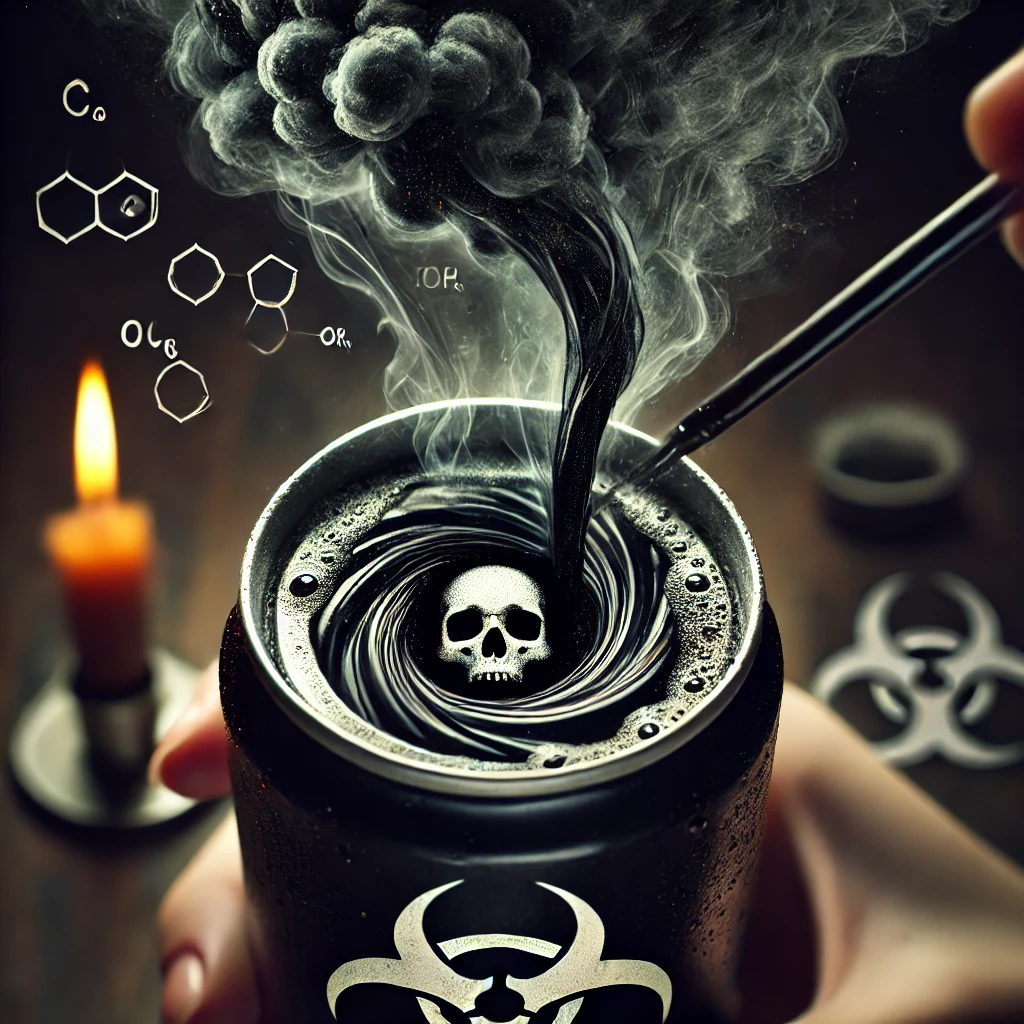
Here’s what’s really inside that innocent-looking can:
1. Caffeine Overload – A Heart Attack in a Can
Caffeine is the main ingredient in energy drinks, but what most people don’t realize is that the amount of caffeine inside a single can can be deadly.
- A standard cup of coffee has 95mg of caffeine.
- A single 16oz can of Monster has 160mg.
- Bang Energy contains 300mg in ONE CAN—more than three cups of coffee at once.
- Some brands, like Hyde Power Potion, go up to 350mg per can—pushing the body into dangerous territory.
🔴 The Dangers of High Caffeine Consumption:
- Increased heart rate and blood pressure → Leads to heart palpitations and increased risk of stroke.
- Overstimulates the nervous system → Causes anxiety, panic attacks, and insomnia.
- Disrupts normal heart function → Can cause sudden cardiac arrest in people with underlying conditions.
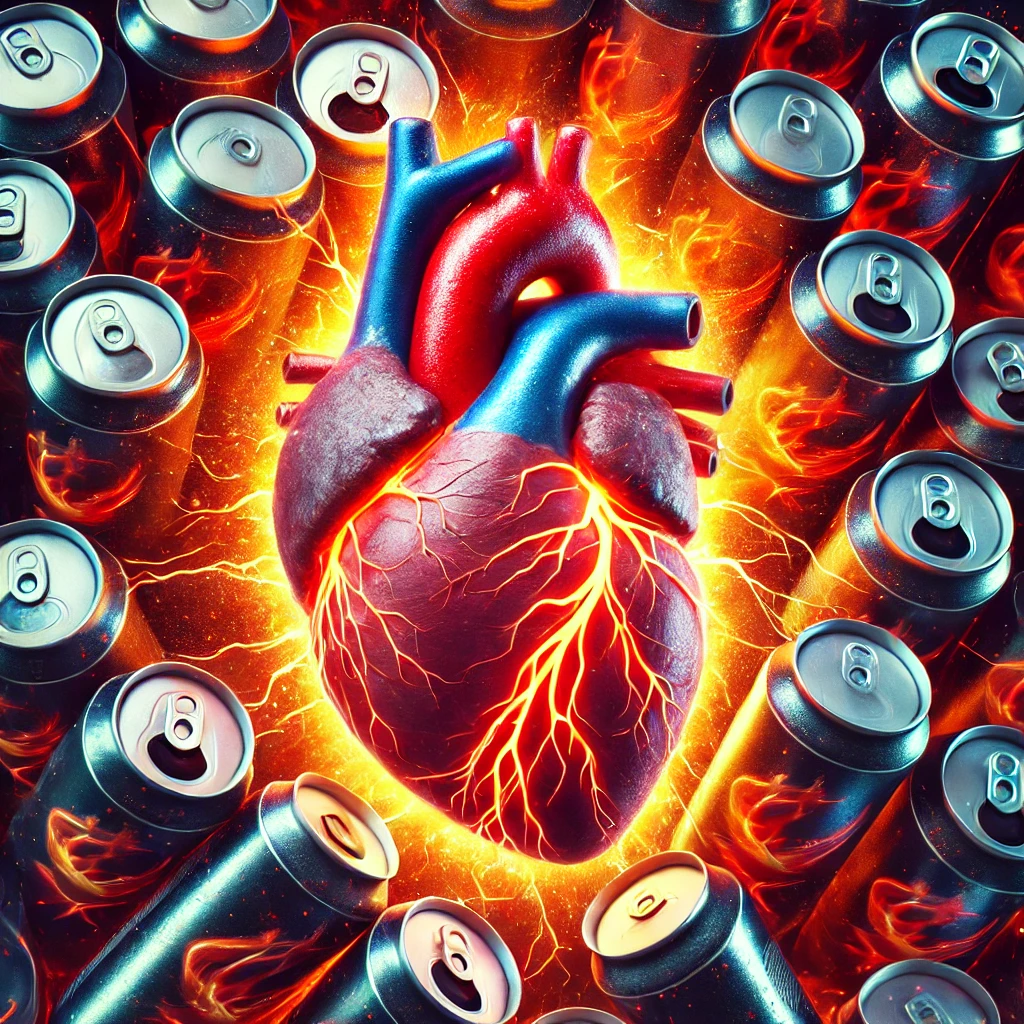
💀 REALITY CHECK:
A 2017 study in Pediatrics reported that children and adolescents who consume energy drinks are at an increased risk of heart-related issues, with some cases leading to death. (Source)
2. Sugar Bomb – The Silent Killer
If the caffeine doesn’t get you, the sugar will.
Most energy drinks are LOADED with sugar—often more than a soda.
- Red Bull (8oz): 27g of sugar
- Monster (16oz): 54g of sugar
- Rockstar (16oz): 63g of sugar
To put that into perspective, the American Heart Association recommends NO MORE than 25g of sugar per day for women and 36g for men. With just one can of Monster or Rockstar, you’re already well above the daily limit—and that’s just ONE drink.
🔴 The Dangers of Excess Sugar:
- Leads to insulin resistance → Increases the risk of Type 2 Diabetes.
- Causes rapid weight gain → Energy drinks are directly linked to the obesity epidemic.
- Triggers crashes and mood swings → Leads to addiction and increased cravings for more sugar.
💀 REALITY CHECK:
A 2019 study in JAMA Pediatrics found that teens who consume energy drinks regularly are at a 26% higher risk of developing obesity-related diseases. (Source)
3. Taurine & Guarana – Double Trouble
Energy drink companies love to boast about Taurine and Guarana, claiming they enhance mental and physical performance. But what they don’t tell you is that these are just more stimulants layered on top of caffeine.
- Taurine is an amino acid that increases adrenaline production, pushing the heart into overdrive.
- Guarana is a plant extract that contains FOUR TIMES the caffeine concentration of coffee beans.
- Combining them with caffeine amplifies the stimulant effect, making the drinks far more dangerous.
🔴 The Dangers of Stimulant Overload:
- Leads to chronic anxiety and panic attacks.
- Increases risk of heart arrhythmias.
- Causes extreme dehydration, leading to kidney damage.
💀 REALITY CHECK:
A 2018 study from the American Heart Association confirmed that mixing these stimulants significantly increases blood pressure and cardiovascular strain, making energy drinks one of the biggest culprits for heart failure in young adults. (Source)
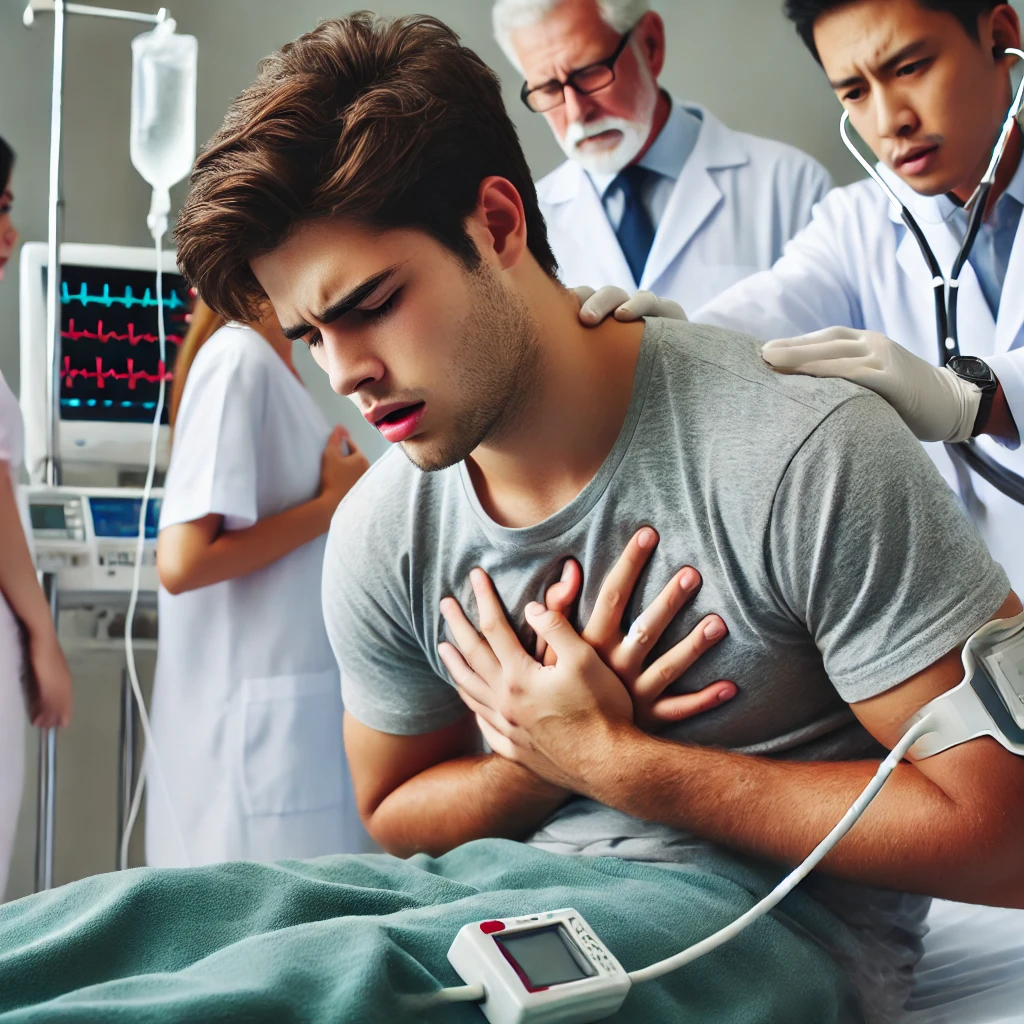
4. Artificial Sweeteners & Colors – The Hidden Poisons
Many “zero sugar” energy drinks use artificial sweeteners like Aspartame, Sucralose, and Acesulfame K. But don’t be fooled—these chemicals might be even worse than sugar.
🔴 The Dangers of Artificial Sweeteners:
- Linked to increased risk of cancer → Aspartame has been shown to cause tumors in animal studies.
- Disrupts gut health → Leads to bloating, IBS, and long-term digestive issues.
- Increases sugar cravings → Tricks the brain into craving more sweet foods.
Energy drinks also contain artificial colors like Red 40, Yellow 5, and Blue 1, which are linked to neurological disorders, ADHD, and hyperactivity in children.
💀 REALITY CHECK:
A 2020 study published in Environmental Health Perspectives found that artificial sweeteners and food dyes increase the risk of metabolic disorders and hyperactivity in children. (Source)
5. The “Crash & Burn” Effect – What Energy Drinks Really Do
Every energy drink consumer knows what happens after the high—the inevitable crash.
- After 1-2 hours → The caffeine wears off, leading to extreme fatigue and brain fog.
- Blood sugar crashes → You feel even worse than before you drank it.
- Your body craves MORE caffeine and sugar → This is how addiction starts.
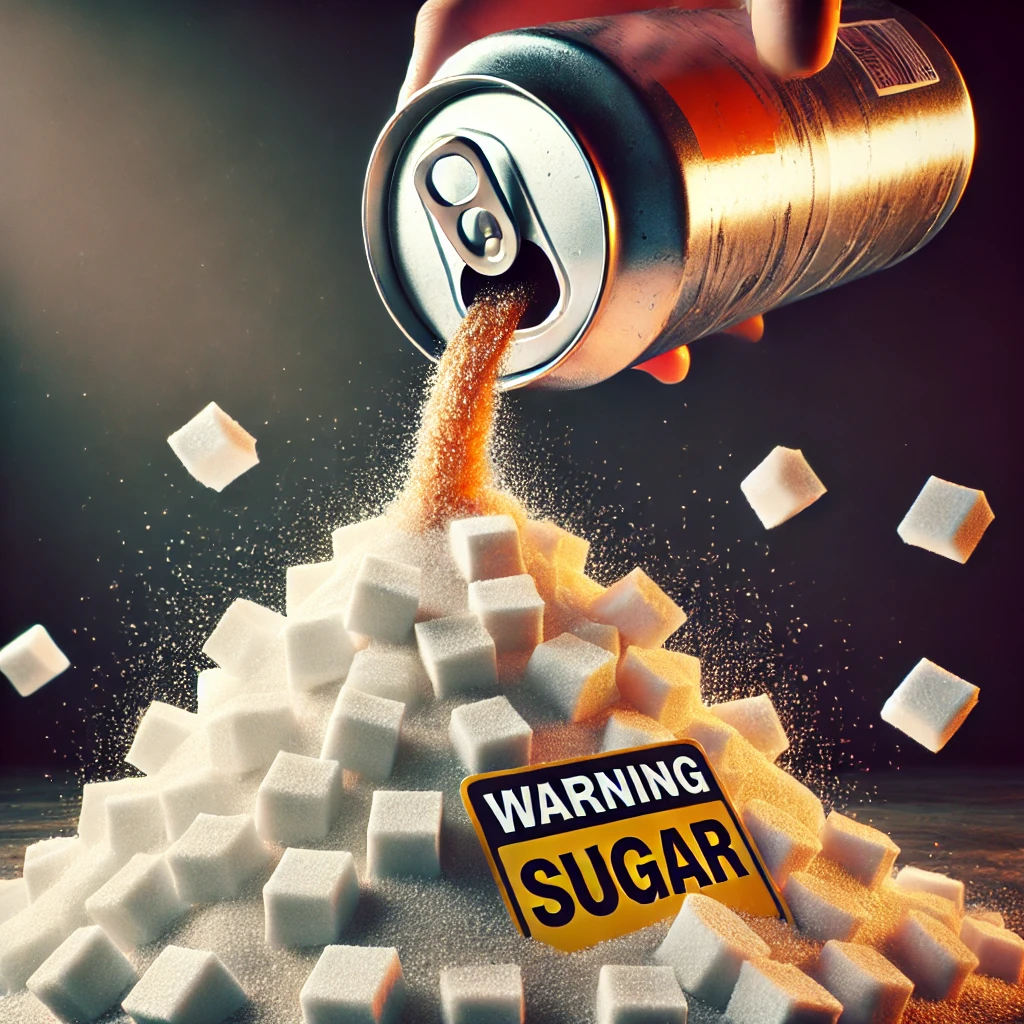
🔴 Long-Term Effects of Chronic Energy Drink Use:
- Adrenal burnout – The body can no longer produce natural energy.
- Caffeine tolerance and withdrawal – Leads to headaches, irritability, and depression.
- Sleep disruption – Causes long-term damage to sleep cycles and hormonal imbalance.
💀 REALITY CHECK:
A 2017 study from Sleep Health Journal found that regular energy drink consumption is directly linked to chronic insomnia and daytime fatigue, creating a cycle of dependency. (Source)
Scientific Sources & Real Data:
- American Heart Association: Energy Drinks Increase Heart Risk (Source)
- JAMA Pediatrics: Energy Drinks and Obesity Risk in Teens (Source)
- Sleep Health Journal: Energy Drinks Cause Chronic Sleep Problems (Source)
Final Thoughts – You’re Drinking Poison
Energy drinks are NOT about “energy”—they are about addiction and long-term health destruction.
- High caffeine levels put your heart in danger.
- Excess sugar and artificial sweeteners destroy metabolism.
- Hidden stimulants create anxiety, panic attacks, and sleep disorders.
- The crash leaves you dependent on MORE energy drinks, leading to a never-ending cycle.
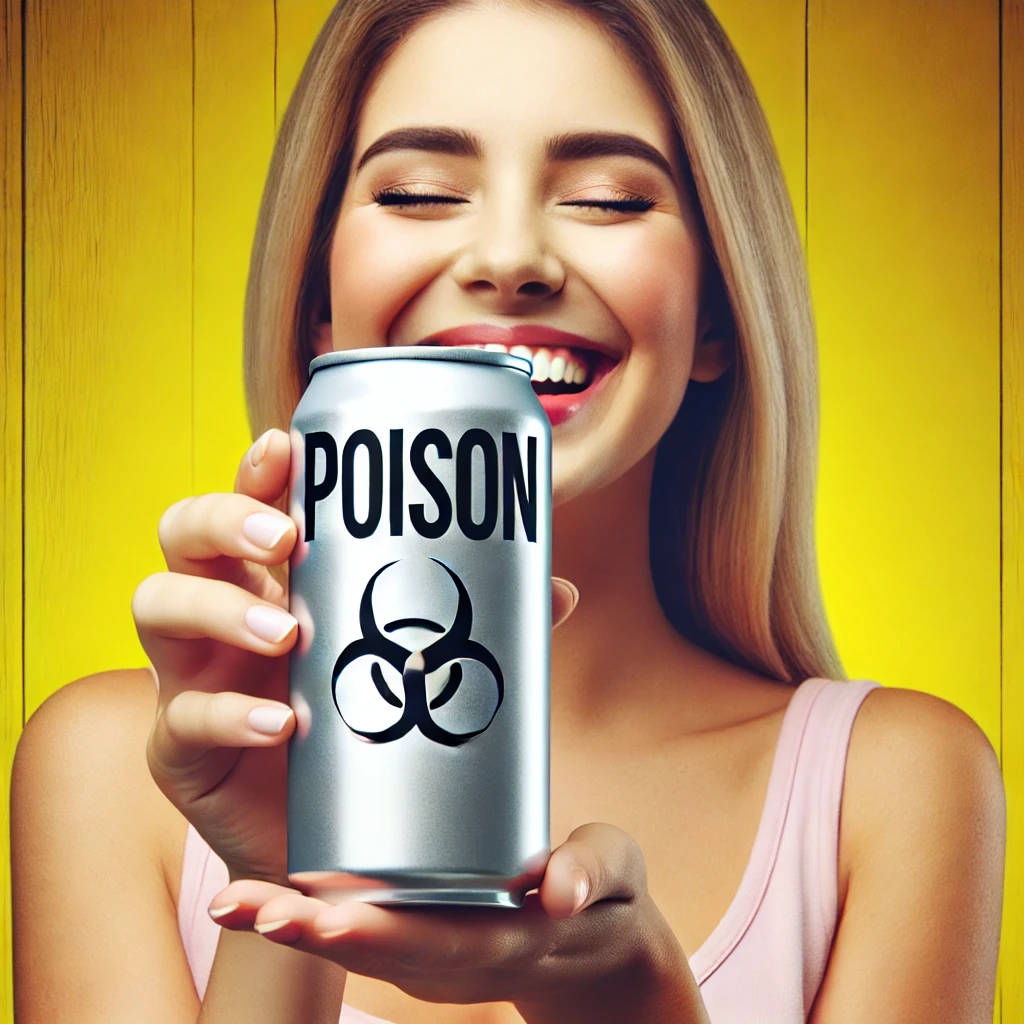
Energy drink companies don’t care if you die young—they only care if you buy another can.
Energy Drinks and the Destruction of Health
Energy drinks aren’t just harmful in the short term—they are wreaking havoc on long-term health, especially for young people. Heart disease, diabetes, mental illness, and addiction are all on the rise, and the science is clear: energy drinks are a major contributor.
1. The Heart Connection – Increased Risk of Cardiac Arrest
The heart is the first major organ to take a hit from energy drinks.
🔴 How Energy Drinks Damage the Heart:
- Caffeine and stimulants overload the heart, increasing heart rate and blood pressure.
- Long-term use stiffens arteries, leading to heart disease.
- Even young, healthy individuals have suffered sudden cardiac arrest after consuming multiple energy drinks.
A 2019 study from the American College of Cardiology found that just one energy drink can significantly increase blood pressure and risk of irregular heartbeat within 90 minutes of consumption. (Source)
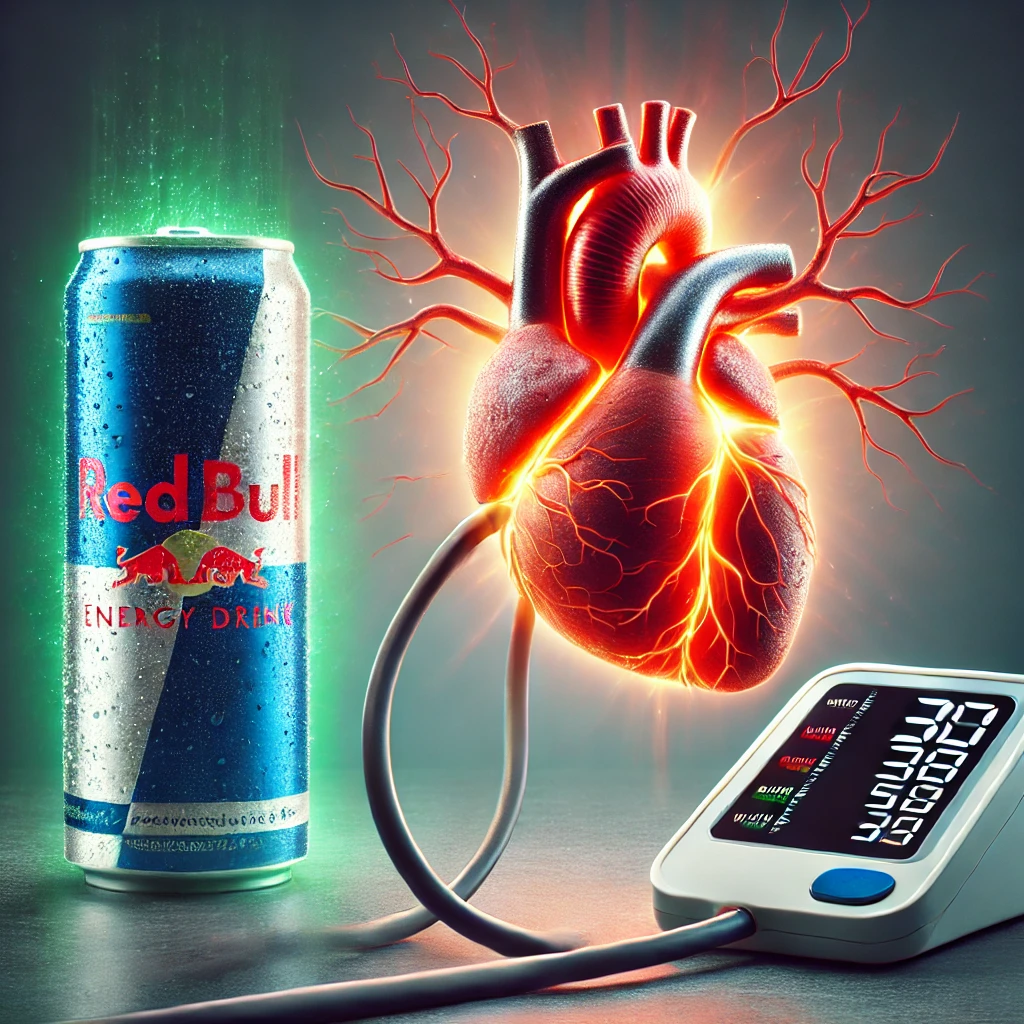
💀 REALITY CHECK:
- Between 2004 and 2018, 34 deaths were directly linked to energy drink consumption, according to the FDA.
- A 16-year-old in South Carolina died from cardiac arrest in 2017 after drinking a latte, a Mountain Dew, and an energy drink within two hours.
- A study from the Mayo Clinic found that regular energy drink consumption doubles the risk of high blood pressure and cardiovascular disease. (Source)
2. Mental Health Impact – Anxiety, Depression, and ADHD-Like Symptoms
Energy drinks don’t just affect the body—they destroy the brain.
🔴 The Mental Side Effects of Energy Drinks:
- Caffeine-induced anxiety – Stimulants flood the brain, mimicking the effects of panic disorder.
- Depression and mood swings – The sugar crash and caffeine withdrawal cause severe mood fluctuations.
- Increased aggression and impulsivity – Studies have linked energy drink consumption to risky behaviors and violent tendencies.
- ADHD-like symptoms – Energy drinks interfere with focus and impulse control, worsening attention disorders.
A 2021 study in JAMA Psychiatry found that teens who consume energy drinks regularly are 66% more likely to develop anxiety disorders and depression. (Source)
💀 REALITY CHECK:
- A study in the Journal of Affective Disorders found that daily energy drink consumption increases suicide risk by 30% in young adults.
- Another study in Neuroscience Letters found that energy drinks alter dopamine pathways, making users more prone to addiction and mental instability.
The more energy drinks people consume, the more their brain chemistry shifts toward anxiety, depression, and addiction.
3. Hormonal Disruption – Destroying Sleep and Growth in Teens
Caffeine and artificial stimulants don’t just keep people awake—they hijack the body’s natural hormonal balance.
🔴 How Energy Drinks Disrupt Hormones:
- Blocks Melatonin Production – Prevents deep, restorative sleep, leading to long-term sleep deprivation.
- Increases Cortisol (Stress Hormone) – Triggers the body’s fight-or-flight response, leading to chronic stress and anxiety.
- Lowers Testosterone in Males – Regular consumption is linked to reduced testosterone production, lower energy, and decreased muscle growth.
- Disrupts Estrogen Balance in Females – Leading to irregular periods and worsened PMS symptoms.

💀 REALITY CHECK:
- A 2018 study published in Endocrinology and Metabolism found that energy drinks significantly reduce testosterone levels in men who consume them regularly.
- Sleep deprivation caused by energy drinks has been directly linked to increased risk of Alzheimer’s and dementia later in life.
4. Metabolic Disaster – The Link to Type 2 Diabetes and Obesity
Energy drinks are a metabolic time bomb.
🔴 How They Cause Metabolic Disease:
- Excess sugar leads to insulin resistance, causing Type 2 diabetes.
- Artificial sweeteners trick the body into storing fat, leading to weight gain.
- Caffeine forces the liver to overproduce glucose, increasing the risk of fatty liver disease.
A 2019 study in The British Journal of Nutrition found that energy drinks significantly increase the risk of metabolic syndrome—a cluster of conditions leading to diabetes, heart disease, and stroke. (Source)
💀 REALITY CHECK:
- Regular energy drink consumers are 50% more likely to develop Type 2 diabetes than non-consumers.
- The combination of sugar, caffeine, and artificial additives slows down metabolism, making weight loss nearly impossible.
5. The Addiction Cycle – Energy Drinks as a Gateway to Harder Drugs
Energy drinks aren’t just habit-forming—they are designed to create addiction.
🔴 How Energy Drinks Hook People for Life:
- Caffeine tolerance builds quickly, leading to increased consumption.
- Withdrawal symptoms (headaches, fatigue, irritability) force people back to drinking them.
- The “high” mimics the effects of stimulant drugs like cocaine and amphetamines.
A 2014 study from the National Institute on Drug Abuse (NIDA) found that teens who frequently consume energy drinks are significantly more likely to experiment with alcohol, cigarettes, and illicit drugs. (Source)
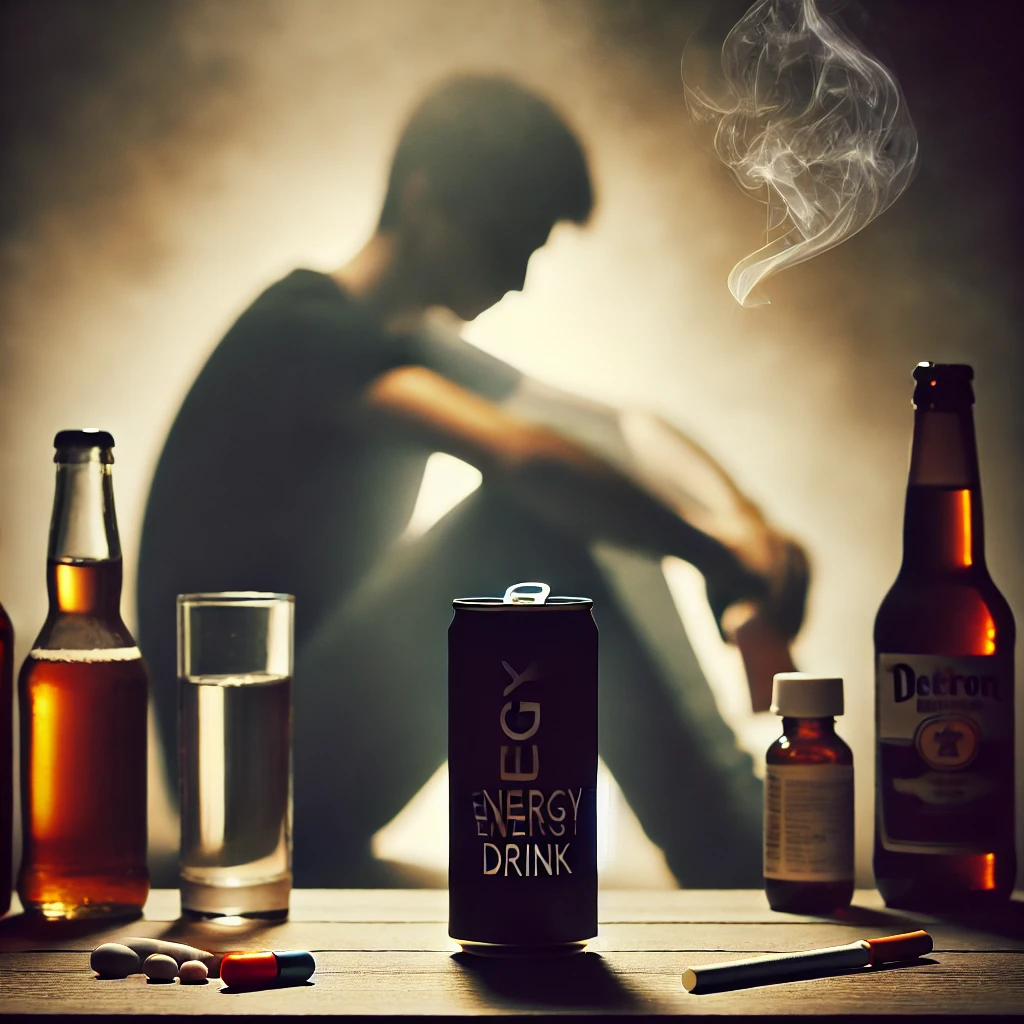
💀 REALITY CHECK:
- A survey of 1,000 college students found that those who consumed energy drinks were 2.5 times more likely to abuse prescription stimulants like Adderall.
- Mixing energy drinks with alcohol is directly linked to increased binge drinking, sexual assault cases, and fatal car accidents.
Scientific Sources & Real Data:
- American College of Cardiology: Energy Drinks and Heart Disease (Source)
- JAMA Psychiatry: Energy Drinks and Mental Health Disorders (Source)
- British Journal of Nutrition: Energy Drinks and Diabetes Risk (Source)
- National Institute on Drug Abuse: Energy Drinks and Addiction (Source)
Final Thoughts – Energy Drinks Are Slowly Killing the Next Generation
The science is undeniable. Energy drinks are not harmless—they are a health crisis in a can.
- They destroy the heart, leading to heart disease and sudden cardiac arrest.
- They wreck mental health, causing anxiety, depression, and addiction.
- They hijack hormones, leading to sleep disorders, weight gain, and stunted growth.
- They are the perfect gateway to harder drugs, alcohol abuse, and lifelong dependency.
Yet, energy drink companies don’t care. They keep pushing their poison onto younger and younger consumers, ensuring a new generation of addicts.
Energy Drinks and the Destruction of Health
Energy drinks aren’t just bad for you—they are slowly and systematically breaking down the human body. The long-term effects of these chemical cocktails go far beyond just a “crash.” They are leading to chronic diseases, heart failure, mental illness, and addiction.
Millions of people, especially the younger generation, are unknowingly poisoning themselves daily, feeding into an industry that thrives on sickness and dependency. Let’s break down exactly how energy drinks are destroying the body from the inside out.
1. The Heart Connection – A Direct Path to Heart Disease
🔴 Fact: Studies show that just one energy drink can cause dangerous heart irregularities within 90 minutes of consumption.
A 2019 study published in the Journal of the American Heart Association found that:
- Energy drinks cause significant disruptions in heart rhythm.
- They lead to prolonged QT intervals, which increases the risk of sudden cardiac arrest.
- They spike blood pressure within 30 minutes, putting strain on arteries and increasing stroke risk.
💀 REALITY CHECK:
A 26-year-old man in Texas died from a heart attack after drinking multiple energy drinks daily for two years. His autopsy showed severe cardiac damage despite no prior health conditions. (Source)
2. Mental Health Impact – Anxiety, Depression, and ADHD-Like Symptoms
Energy drinks don’t just mess with your body—they destroy your mind.
🔴 Caffeine and stimulant overload cause:
- Severe anxiety → The overstimulation causes panic attacks and constant restlessness.
- Depression & mood swings → The “crash” leads to dopamine depletion, leaving users feeling exhausted and hopeless.
- ADHD-like symptoms → High caffeine use is linked to difficulty concentrating, impulsivity, and irritability.
💀 REALITY CHECK:
A 2016 study in Psychiatry Research found that adolescents who consume energy drinks are twice as likely to develop mental health disorders, including severe depression and chronic anxiety. (Source)
3. Hormonal Disruption – Sleep Cycles and Endocrine Damage
Energy drinks completely wreck the body’s natural hormonal balance.

🔴 How it destroys your sleep and hormones:
- Caffeine blocks melatonin production → Prevents deep, restorative sleep.
- Chronic sleep deprivation lowers testosterone & estrogen levels → Leads to infertility, hormonal imbalances, and metabolic disorders.
- Artificial sweeteners disrupt gut bacteria → Causes hormonal dysregulation and inflammation.
💀 REALITY CHECK:
A 2021 study published in Sleep Medicine Reviews found that teens who consume energy drinks regularly experience severe disruptions in circadian rhythm, leading to chronic fatigue and metabolic disorders. (Source)
4. Metabolic Disaster – Obesity, Diabetes, and Liver Damage
Energy drinks directly contribute to the rising epidemic of obesity and diabetes.
🔴 Why?
- High sugar levels cause insulin resistance → Leading to Type 2 Diabetes.
- Artificial sweeteners trick the brain → Making it crave more sugar, leading to overeating and weight gain.
- Caffeine and stimulants overstimulate the liver → Increasing risk of non-alcoholic fatty liver disease (NAFLD).
💀 REALITY CHECK:
A 2018 study from the American Diabetes Association found that regular energy drink consumption increases the risk of developing Type 2 Diabetes by 67%. (Source)
5. The Addiction Cycle – Why You Can’t Stop Drinking Them
Energy drink companies design their products to be addictive—just like cigarettes and hard drugs.
🔴 How the addiction works:
- Caffeine triggers dopamine release → Giving you a temporary high, making you crave more.
- The sugar crash makes you feel worse → You reach for another can to feel “normal” again.
- Withdrawal symptoms kick in → Headaches, irritability, fatigue—forcing you to keep drinking just to function.
💀 REALITY CHECK:
A 2017 study from the National Institute on Drug Abuse (NIDA) found that chronic energy drink users show similar brain activity to drug addicts, reinforcing a cycle of dependency. (Source)
Scientific Sources & Real Data:
- Journal of the American Heart Association: Energy Drinks and Cardiac Risk (Source)
- Psychiatry Research: Energy Drinks and Mental Health Disorders (Source)
- American Diabetes Association: Energy Drinks and Type 2 Diabetes Risk (Source)
- National Institute on Drug Abuse: Energy Drinks and Addiction (Source)
Final Thoughts – Energy Drinks Are Destroying an Entire Generation
This isn’t an exaggeration—energy drinks are killing people, both physically and mentally.
They are leading to heart disease, diabetes, mental illness, sleep disorders, and addiction, all while being marketed as harmless “boosts” for energy and focus.
But the truth is out. These drinks are not about energy. They are about control.
Corporations don’t care if you develop heart disease at 30 or suffer from lifelong insomnia. As long as you keep buying, they keep winning.
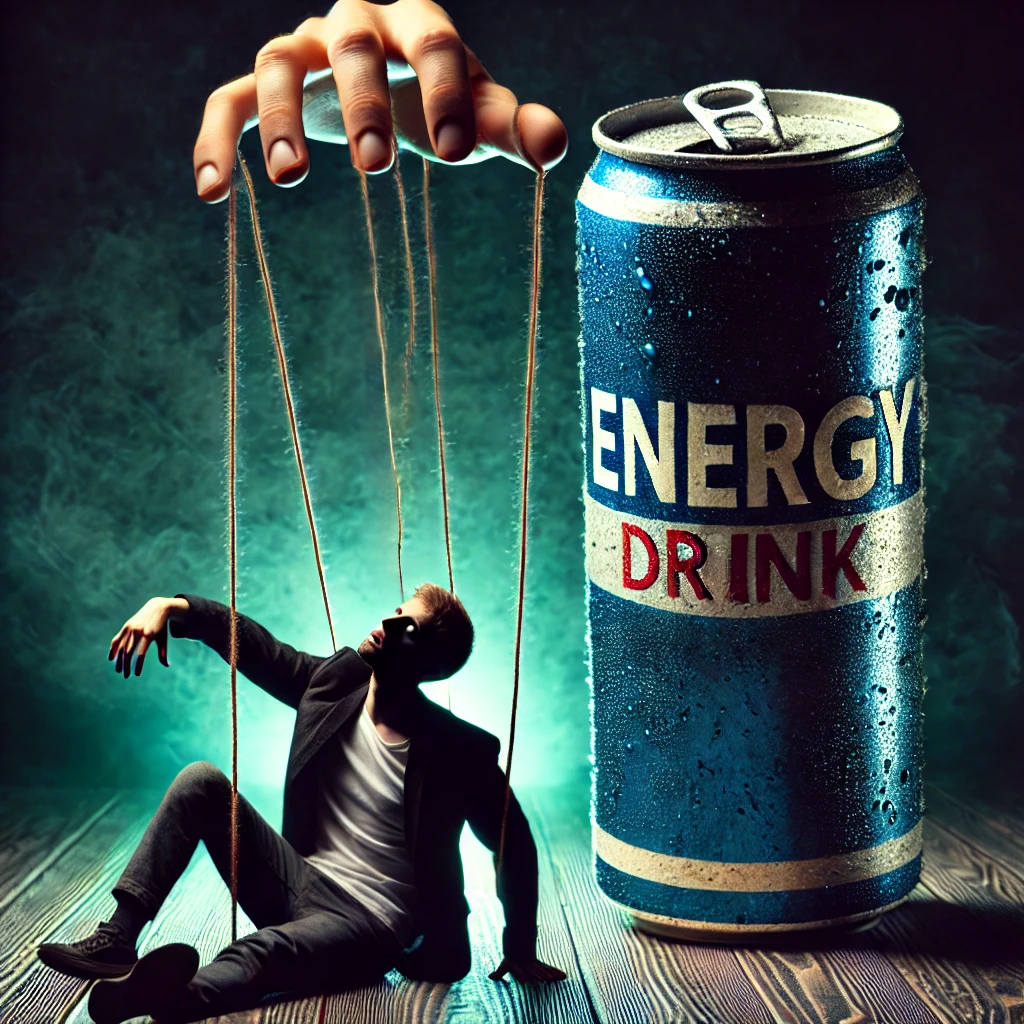
It’s time to wake up.
Conspiracy or Reality? The Sinister Ties Behind Energy Drinks
If energy drinks are so dangerous, why are they still legal, unregulated, and widely available—even to kids?
The answer is simple: There’s too much money to be made in keeping people sick, addicted, and dependent. Energy drinks aren’t just a product; they are a weapon in a larger system designed to exploit human health for corporate profit.
The deeper you dig, the more it becomes clear—energy drinks are connected to Big Pharma, government corruption, and the rise of chronic disease.
1. Big Pharma Wins When You Get Sick
Let’s connect the dots.
🔴 Energy drinks make you sick.
- They destroy your heart, metabolism, mental health, and sleep.
- They contribute to diabetes, anxiety, and addiction.
- They cause long-term damage that requires medical intervention.
🔴 Who profits from this?
- Big Pharma.
- The same corporations that make medications for heart disease, diabetes, and anxiety are also the ones funding “scientific studies” that downplay the risks of energy drinks.
- The healthcare industry.
- Sick people = lifelong customers. The more dependent you are on medication, the more money they make.
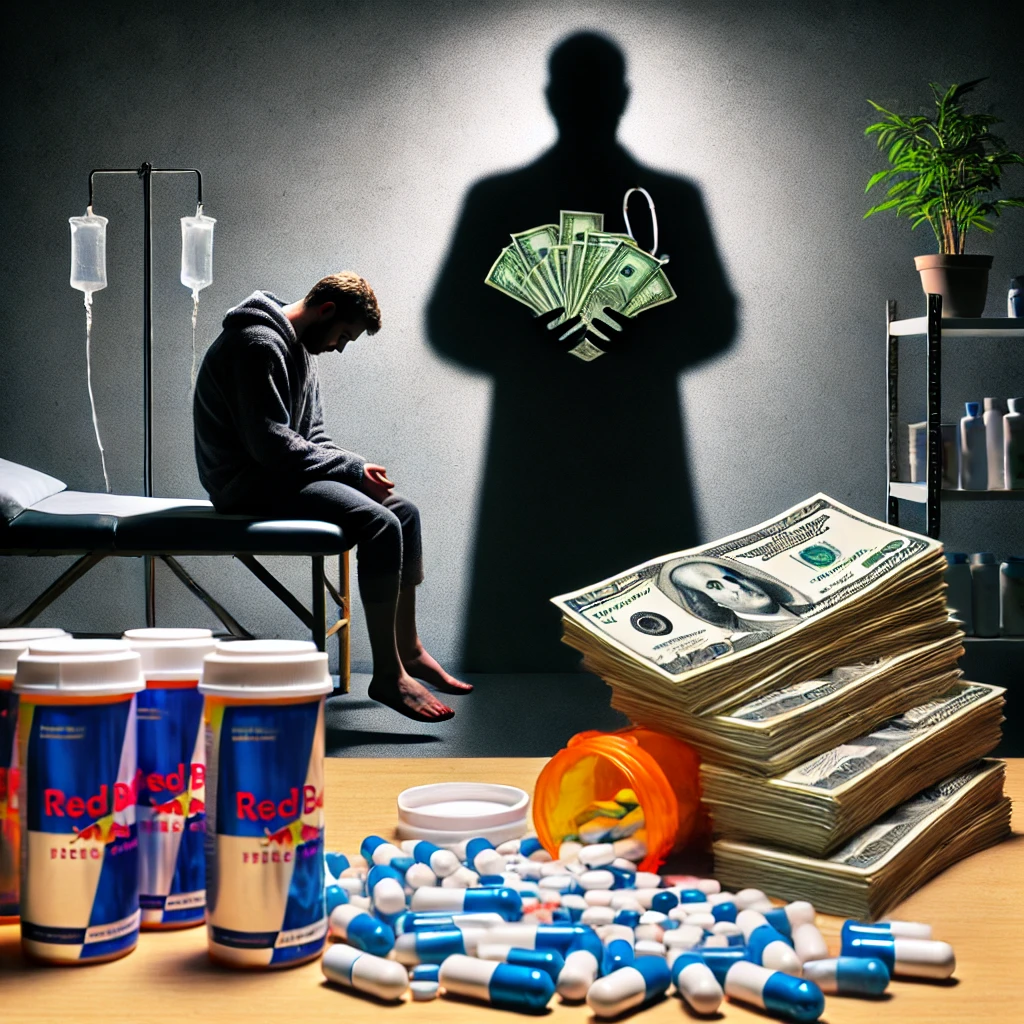
💀 REALITY CHECK:
A 2019 investigation from the British Medical Journal (BMJ) found that many scientific studies “proving” energy drinks are safe were funded by pharmaceutical companies that profit from treating the very diseases these drinks cause. (Source)
2. The FDA Turns a Blind Eye – Government Corruption at Its Finest
You might be wondering: Why doesn’t the government do something about this?
Simple: Money talks.
🔴 The Food and Drug Administration (FDA) doesn’t regulate energy drinks like soda or coffee.
- Energy drink companies use a loophole by labeling their products as “dietary supplements” rather than beverages, allowing them to bypass strict regulations.
- This means companies aren’t required to disclose all ingredients or their actual health risks.
🔴 Who funds political campaigns?
- Major beverage companies like Coca-Cola, PepsiCo, and Red Bull pour millions of dollars into lobbying efforts to keep these drinks on the shelves.
- The energy drink industry alone spent over $6.5 million lobbying in 2022 to prevent stricter regulations.
💀 REALITY CHECK:
A 2020 report by the Center for Science in the Public Interest revealed that the FDA was pressured by corporate lobbyists to avoid regulating energy drinks, despite overwhelming evidence of their dangers. (Source)
3. Energy Drinks and Emergency Room Profits – Hospitals Cashing In
Here’s the brutal truth: Hospitals and emergency rooms are making millions off energy drink overdoses.
- Over 20,000 ER visits per year are directly linked to energy drink consumption.
- The average cost of an emergency room visit in the U.S. is $2,200.
- Hospitals make billions treating heart problems, panic attacks, and seizures caused by energy drinks.
💀 REALITY CHECK:
A 2018 study in the American Journal of Emergency Medicine found that over 50% of ER visits related to energy drinks result in hospitalization or long-term medical treatment. (Source)
4. The Military Industrial Complex – Energy Drinks in the Armed Forces
This one might shock you: The U.S. military heavily promotes energy drink consumption among soldiers.
🔴 Why?
- Soldiers rely on energy drinks to stay awake during missions and training.
- The Pentagon has contracts with major energy drink companies to supply military bases worldwide.
- Military personnel suffer higher rates of insomnia, heart problems, and PTSD—all conditions that Big Pharma profits from treating.
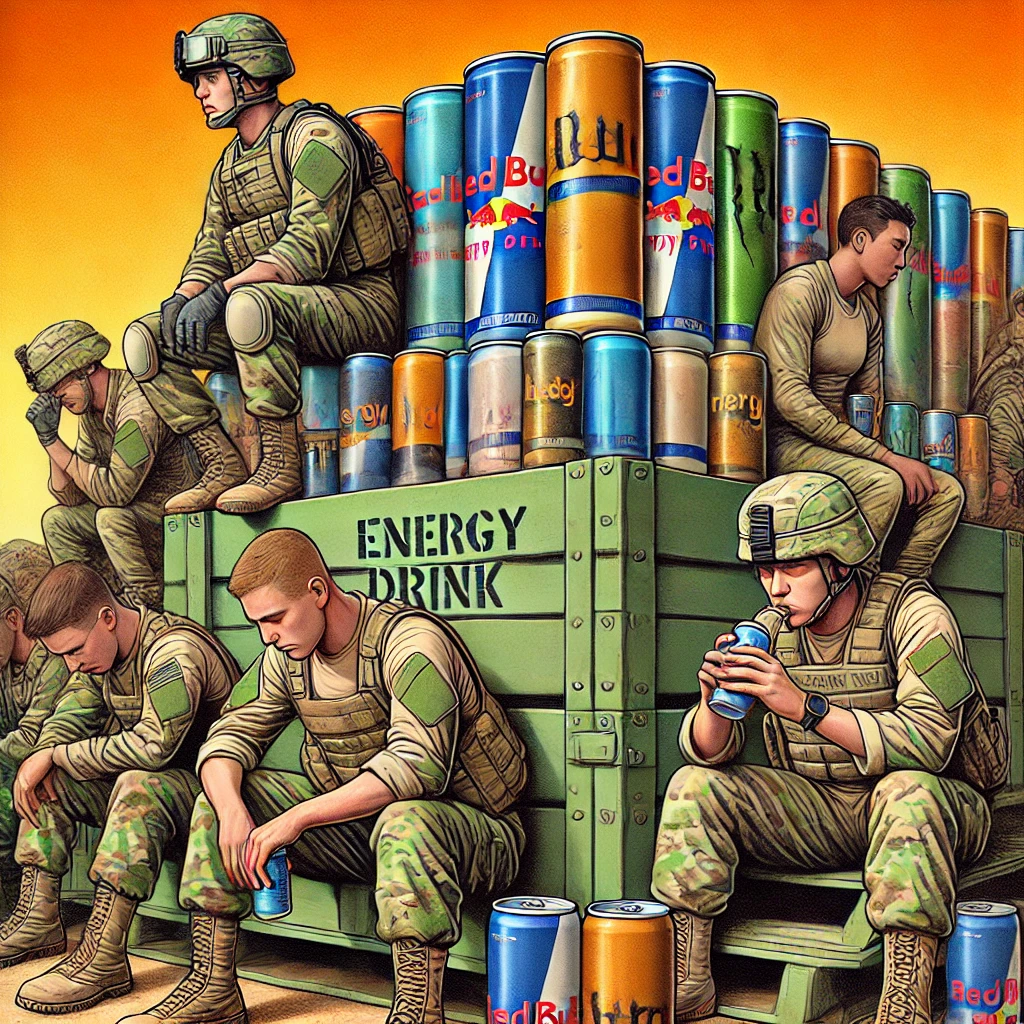
💀 REALITY CHECK:
A 2019 study from Military Medicine Journal found that U.S. soldiers who consume energy drinks regularly experience higher rates of anxiety, sleep disorders, and cardiovascular disease. (Source)
5. Energy Drinks and Alcohol – A Deadly Combination
Ever wonder why bars and nightclubs push Red Bull and vodka so hard? It’s not just a random mix—it’s designed to keep you drinking longer.
🔴 How energy drinks + alcohol = more money for bars:
- Caffeine masks alcohol’s effects → You feel less drunk than you really are.
- This makes people drink more, faster → Increasing bar profits.
- It also increases the risk of blackouts, alcohol poisoning, and reckless behavior.
💀 REALITY CHECK:
A 2017 study from the Journal of Studies on Alcohol and Drugs found that people who mix energy drinks with alcohol are 3x more likely to binge drink and engage in risky behaviors like drunk driving. (Source)
Scientific Sources & Real Data:
- British Medical Journal (BMJ): Pharma Industry Manipulation of Energy Drink Research (Source)
- Center for Science in the Public Interest: FDA Corruption & Energy Drink Regulations (Source)
- American Journal of Emergency Medicine: ER Visits and Energy Drinks (Source)
- Military Medicine Journal: Energy Drink Use Among U.S. Soldiers (Source)
- Journal of Studies on Alcohol and Drugs: Energy Drinks and Binge Drinking (Source)
Final Thoughts – Energy Drinks Are a Tool for Control
The deeper you go, the clearer it becomes: Energy drinks are NOT just about giving people “energy.”
They are about addiction, profit, and control.
- Big Pharma profits from your sickness.
- The government ignores the problem because of corporate lobbying.
- Hospitals and ERs make millions treating the side effects.
- The military pushes them to keep soldiers awake and dependent.
- Bars sell them to make people drink more.
It’s not an accident. It’s a system.
The question is: Are you going to keep playing into it?
Breaking Free – What Can You Do?
By now, it should be clear: Energy drinks are a trap. They’re designed to hook you, destroy your health, and keep you coming back for more. But here’s the good news—you don’t have to be a victim. You can break free.
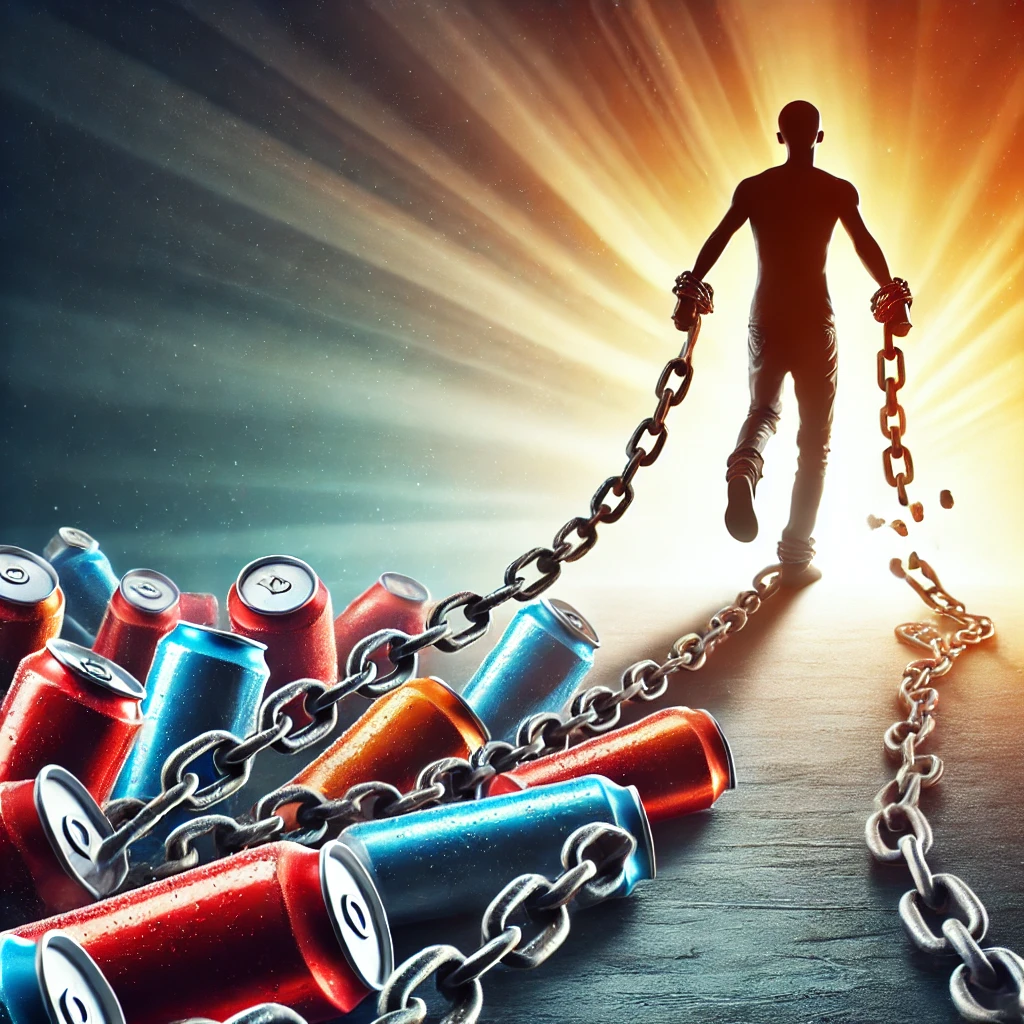
Quitting energy drinks isn’t just about cutting out a bad habit—it’s about taking back control of your life, your body, and your future.
Let’s talk about how you can detox from these poisons, regain your natural energy, and avoid falling back into the cycle.
1. How to Detox from Energy Drinks Safely
🔴 The first 7-10 days are the hardest. Your body has been dependent on high doses of caffeine, sugar, and stimulants for so long that quitting can trigger withdrawal symptoms.
Common withdrawal symptoms include:
- Headaches
- Fatigue
- Irritability
- Brain fog
- Insomnia
- Mood swings
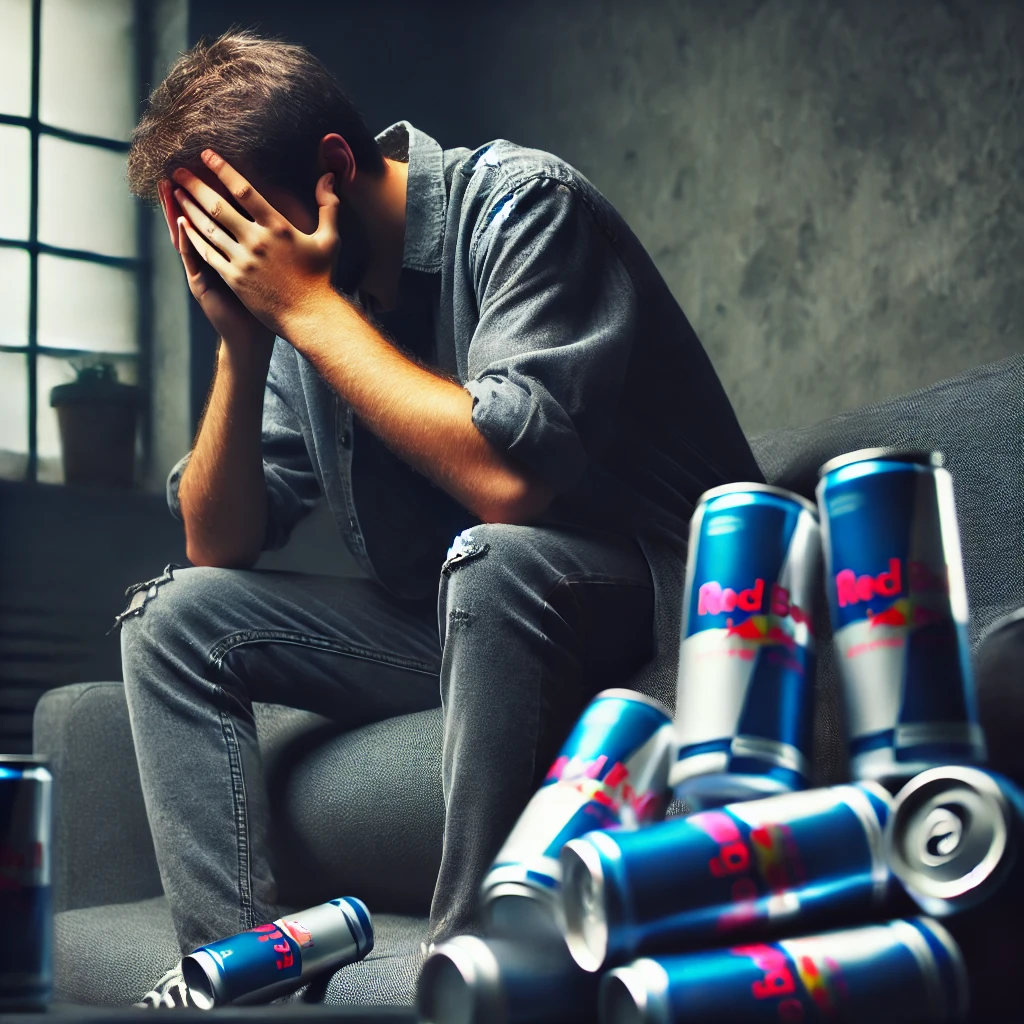
✅ Step 1: Taper Off Instead of Going Cold Turkey
- If you drink multiple cans a day, don’t quit all at once—this will cause severe withdrawal symptoms.
- Reduce your intake gradually over 1-2 weeks to allow your body to adjust.
- Example: If you drink 2 cans a day, cut down to 1 per day for a few days, then half a can, then none.
✅ Step 2: Hydrate & Flush Out Toxins
- Energy drinks cause severe dehydration—start drinking a gallon of water a day to flush out toxins.
- Add electrolytes (sodium, potassium, magnesium) to replenish what energy drinks stripped from your body.
✅ Step 3: Support Your Body with Nutrients
- Take B vitamins (B6 & B12) to restore natural energy levels.
- Eat iron-rich foods (spinach, red meat, eggs) to combat fatigue naturally.
- Consume healthy fats (avocados, nuts, olive oil) to rebalance your metabolism.
✅ Step 4: Get Sunlight & Fix Your Sleep
- Energy drinks wreck your sleep cycles—fix them by getting morning sunlight within 30 minutes of waking up.
- Avoid screens and blue light 2 hours before bed.
- Take magnesium and L-theanine to help calm your nervous system and improve sleep quality.

✅ Step 5: Replace the Habit with Natural Energy Boosters
Instead of energy drinks, try:
- Black coffee (without sugar) – Pure caffeine, no toxic additives.
- Green tea – Contains L-theanine, which provides energy without the crash.
- Electrolyte water – Many energy drink cravings come from dehydration.
- Exercise – Even a 10-minute walk can boost energy naturally.
2. Healthy Alternatives to Energy Drinks
You don’t need energy drinks to function—there are better ways to stay alert without the side effects.
✅ For Focus & Brain Power:
- Matcha Green Tea – Long-lasting energy, high in antioxidants.
- Lion’s Mane Mushroom Tea – Improves memory & focus.
- Cold Showers – Instant wake-up & mood boost.
✅ For Physical Energy & Endurance:
- Coconut Water + Sea Salt – Natural electrolytes without the sugar.
- Beet Juice – Increases blood flow & oxygen delivery.
- Chia Seeds + Lemon Water – Hydrates and provides lasting energy.
✅ For Beating Sugar Cravings:
- Dark Chocolate (85% or higher) – Gives a natural dopamine boost.
- Cinnamon Tea – Helps stabilize blood sugar levels.
- Fresh Fruit (Bananas, Apples, Berries) – Natural sugars with fiber to prevent crashes.
3. How to Protect Your Kids from Energy Drinks
Energy drink companies specifically target children and teens—and it’s up to parents and educators to break the cycle before it starts.
🔴 How to Keep Kids Away from Energy Drinks:
- Educate them early – Show them how these drinks are designed to be addictive and dangerous.
- Set an example – If you drink them, your kids will think it’s normal.
- Keep them out of the house – If it’s not available, they won’t drink it.
- Promote real food & hydration – Teach kids that real energy comes from good sleep, proper hydration, and nutrition.
- Monitor school environments – Many schools still sell energy drinks in vending machines. Push for policy changes in your community.
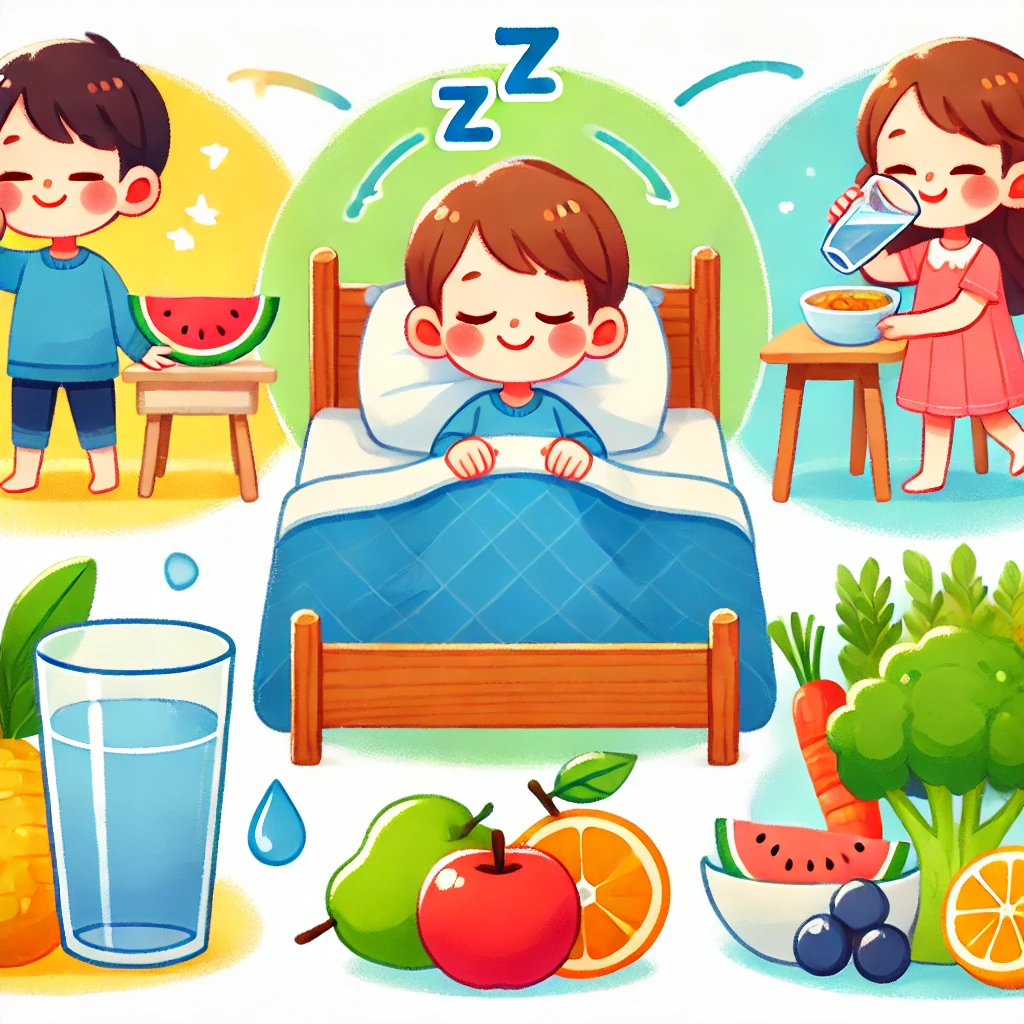
💀 REALITY CHECK:
A 2018 study from the American Academy of Pediatrics confirmed that children who start consuming energy drinks before age 14 are twice as likely to develop metabolic disorders and heart problems by adulthood. (Source)
4. Spreading Awareness – Fighting Back Against the Energy Drink Industry
You don’t just have to quit energy drinks for yourself—you can help expose the truth and save others.
✅ How You Can Take Action:
- Share this information – Most people have NO IDEA how dangerous these drinks really are.
- Boycott the industry – Stop supporting companies that profit from addiction and sickness.
- Speak up in schools – If energy drinks are being sold in schools, push for them to be banned.
- Demand stronger regulations – Call out the FDA and lawmakers who refuse to regulate energy drinks properly.
💀 REALITY CHECK:
In several European countries, energy drinks are banned or restricted for minors. The U.S. continues to allow them without regulation, proving that corporate profits come before public health. (Source)
Scientific Sources & Real Data:
- American Academy of Pediatrics: Energy Drinks & Child Health Risks (Source)
- Sleep Medicine Reviews: Energy Drinks and Sleep Disruptions (Source)
- National Center for Biotechnology Information: Energy Drinks & Metabolic Disorders (Source)
- British Medical Journal: How the Energy Drink Industry Escapes Regulation (Source)
Final Thoughts – Take Back Your Health
Energy drinks are a scam, a poison, and a tool of control.
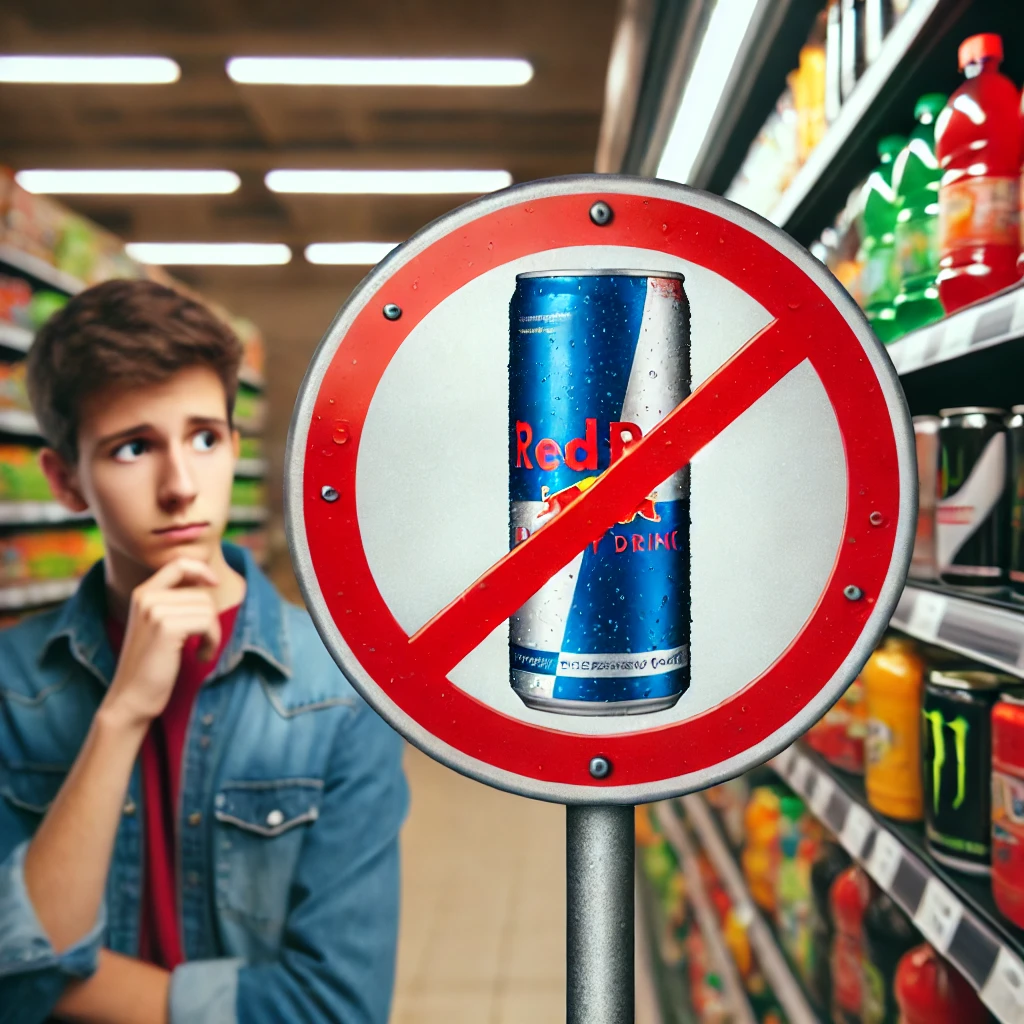
They are not about energy—they are about addiction.
They are not about performance—they are about profit.
They are not harmless—they are destroying lives.
You have a choice: Stay trapped in the cycle, or break free.
🚨 If you made it this far, you already know the truth. Now, what are you going to do about it?
🔴 STOP supporting the energy drink industry.
🔴 START taking back control of your health.
🔴 HELP spread awareness and protect future generations.
Because if we don’t wake up now, our children won’t stand a chance.
Let’s reclaim what is rightfully our’s in this digital noise we live in. Join us in this exploration of how deep the rabbit hole actually goes.
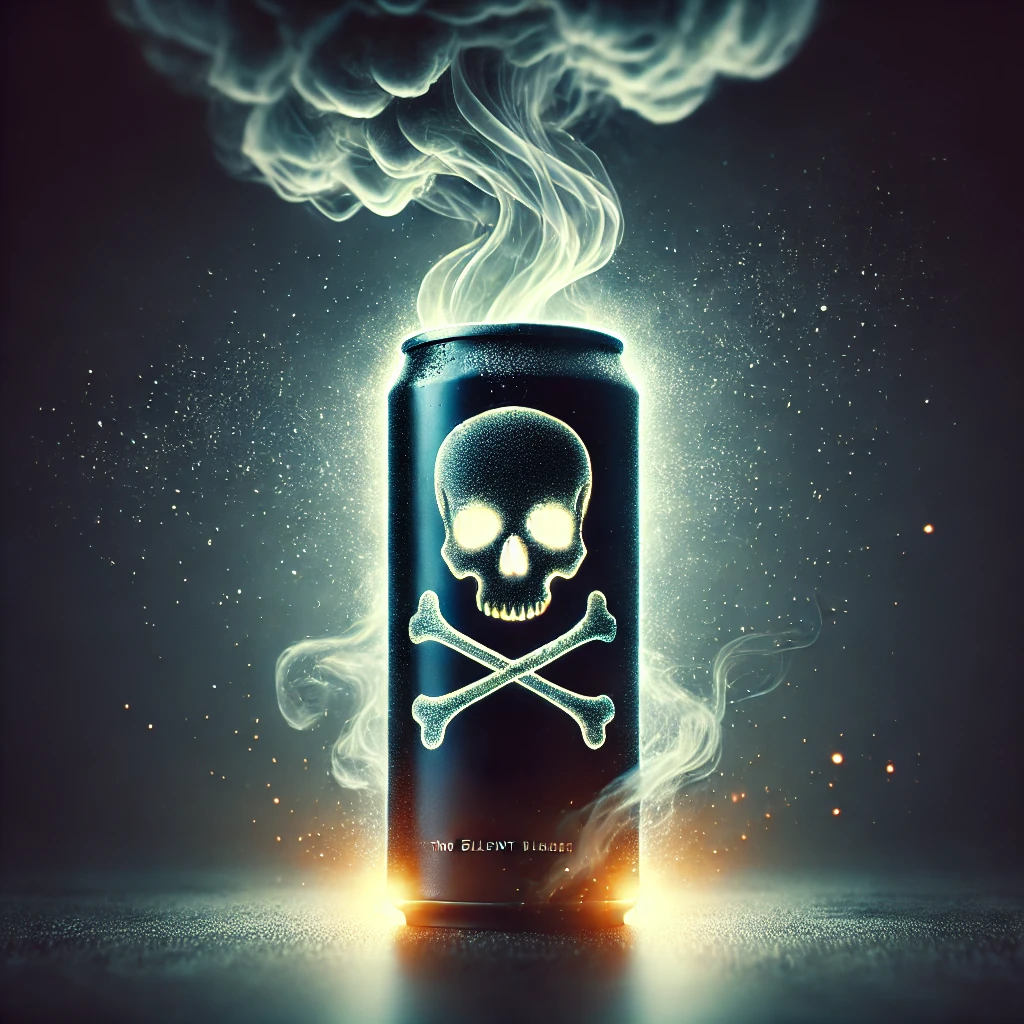
No responses yet